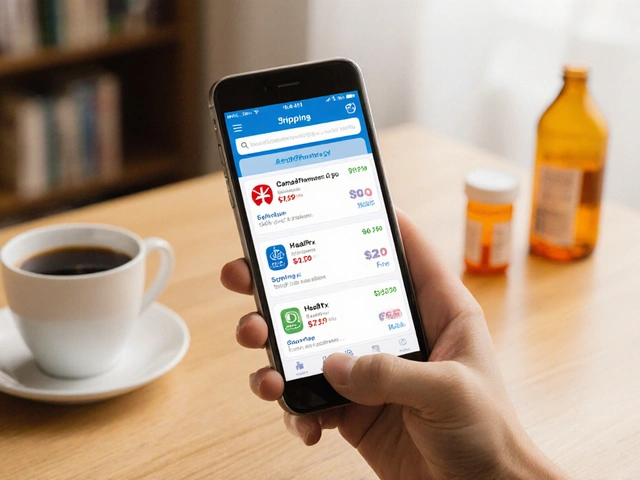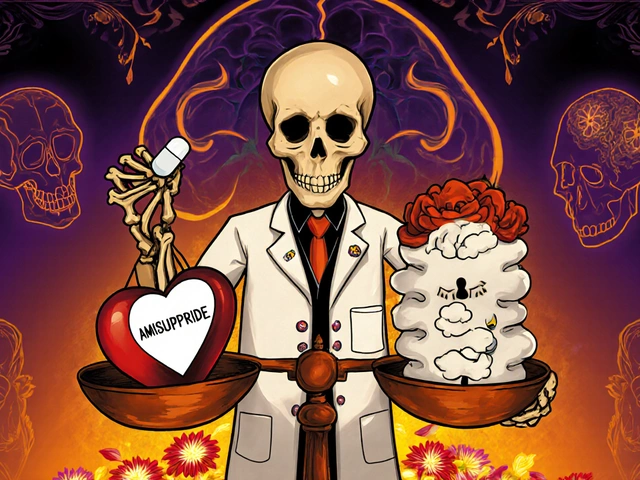Immunosuppressant Interaction Checker
Check Drug Interactions
How This Works
Immunosuppressants rely heavily on CYP3A4 enzyme metabolism. This tool shows how common medications interact with your drugs based on their metabolic pathways.
Living with a transplanted organ means a daily balancing act: keep rejection at bay while wrestling with the side effects of the medicines that make that possible. This guide walks you through the most common immunosuppressants, how they interact with other drugs, and what side effects to expect - plus practical tips to stay on top of monitoring and quality‑of‑life issues.
Why Immunosuppression Is Non‑Negotiable
For organ transplant recipients, the immune system is a double‑edged sword. It protects against infection, yet it also sees the new organ as foreign and attacks it. Immunosuppressants blunt that response, allowing the graft to survive. Without lifelong therapy, most recipients would face acute rejection within weeks.
Core Immunosuppressant Classes
Modern regimens usually combine three pillars: a calcineurin inhibitor, an antimetabolite, and a corticosteroid. Occasionally a mammalian target of rapamycin (mTOR inhibitor) is added or used instead.
- Tacrolimus (calcineurin inhibitor) - blocks T‑cell activation by inhibiting calcineurin phosphatase.
- Cyclosporine (calcineurin inhibitor) - same pathway as tacrolimus but with a different binding site.
- Mycophenolate mofetil (antimetabolite) - impairs purine synthesis, limiting lymphocyte proliferation.
- Azathioprine (antimetabolite) - an older alternative that also targets DNA synthesis.
- Prednisone (corticosteroid) - broad anti‑inflammatory effects, damping many cytokine pathways.
- Sirolimus (mTOR inhibitor) - blocks cell‑cycle progression at G1, sparing the kidneys from calcineurin‑related toxicity.
How These Drugs Are Metabolized - The Interaction Hotspot
Calcineurin inhibitors rely heavily on the liver enzyme CYP3A4 and the transporter P‑glycoprotein. Anything that nudges those pathways up or down can swing drug levels dramatically.
Typical scenarios:
- Azole antifungals (e.g., fluconazole) inhibit CYP3A4 → tacrolimus levels jump 50‑200%.
- Rifampin induces CYP3A4 → tacrolimus levels plunge 60‑90%.
- Calcium‑channel blockers, macrolide antibiotics, and certain anticonvulsants sit somewhere in between, requiring close therapeutic drug monitoring.
Side‑Effect Landscape by Drug Class
Every class has a signature set of adverse events. Knowing them helps you spot problems early and discuss adjustments with your transplant team.
| Drug | Class | Major Side Effects | Interaction Risk |
|---|---|---|---|
| Tacrolimus | Calcineurin inhibitor | Nephrotoxicity, new‑onset diabetes (20‑30%), neurotoxicity (tremor) | High - CYP3A4 & P‑gp |
| Cyclosporine | Calcineurin inhibitor | Nephrotoxicity, gingival hyperplasia, hirsutism | High - CYP3A4 & P‑gp |
| Mycophenolate mofetil | Antimetabolite | GI upset (30‑50%); leukopenia; infections | Moderate - mainly GI absorption |
| Azathioprine | Antimetabolite | Bone‑marrow suppression, nausea | Low‑moderate - TPMT enzyme polymorphisms |
| Prednisone | Corticosteroid | Weight gain, hypertension, osteoporosis, mood swings | Low - but potentiates diabetes risk |
| Sirolimus | mTOR inhibitor | Proteinuria, delayed wound healing, hyperlipidemia | Moderate - CYP3A4 |
Real‑World Patient Experiences
Numbers tell the story, but personal anecdotes highlight the day‑to‑day impact. A kidney‑recipient on tacrolimus described a constant tremor that made brushing teeth feel like a chore. Another liver‑recipient who switched to sirolimus saw a jump in GFR from 38 → 52 mL/min but now battles mouth ulcers and higher cholesterol. Across Reddit’s r/transplant community, about 65% of users report at least three persistent side effects, with chronic fatigue and sleep disruption topping the list.
Managing the Regimen: Monitoring & Lifestyle Tips
Staying on top of drug levels and lab work can feel like a part‑time job, yet it’s the safest way to avoid rejection and toxicity.
- Therapeutic drug monitoring (TDM): Tacrolimus troughs start at 5‑8 ng/mL (first year) then aim for 3‑6 ng/mL long‑term. Check levels twice weekly early on, tapering to monthly after six months.
- Lab schedule: CBC every month (watch for leukopenia), lipid panel quarterly, OGTT bi‑annually, and renal function (creatinine, eGFR) monthly.
- Medication reconciliation: Keep an up‑to‑date list. Any new antibiotic, antifungal, or over‑the‑counter drug should trigger a level check within a week.
- Adherence aids: Pill‑boxes, smartphone reminders, or electronic dispensers have lifted adherence from ~70% to >85% in recent studies.
- Lifestyle guardrails: Avoid raw foods (Listeria), wear masks in crowded indoor settings, and report fevers >100.4 °F immediately.

Emerging Alternatives & Future Directions
While calcineurin inhibitors dominate (≈92% of kidney recipients), new players are reshaping the field.
- Voclosporin (Lupkynis): A next‑gen calcineurin inhibitor with steadier pharmacokinetics and ~24% less nephrotoxicity than tacrolimus.
- Belatacept (Nulojix): Costimulation blocker that cuts cardiovascular mortality and malignancy risk but carries a higher acute‑rejection rate.
- Regulatory T‑cell therapy (ONE Study): Early trials show 15% of kidney recipients achieving operational tolerance, potentially eliminating lifelong drugs.
- Steroid minimization: Over 85% of heart‑lung centers now withdraw steroids within two weeks for low‑risk patients, slashing bone‑loss and weight‑gain issues.
These advances aim to tip the scale toward fewer side effects while preserving graft health.
Quick Checklist for Recipients
- Know your core drugs (e.g., tacrolimus, mycophenolate, prednisone).
- Monitor trough levels as directed; note any recent medication changes.
- Keep a symptom diary - flag new tremors, swelling, GI upset, or mood swings.
- Schedule labs on time; bring all results to your next clinic visit.
- Discuss any side‑effect that disrupts daily life - dose adjustments or drug swaps may be possible.
- Stay within the recommended distance to your transplant center during the first year.
- Ask about emerging options if side effects become intolerable.
Bottom Line
Immunosuppressant drug interactions and side effects are inevitable, but they are manageable with vigilance, open communication, and a solid monitoring plan. Knowing which drugs are most likely to clash, recognizing the hallmark toxicities, and leveraging new therapies when appropriate can keep you thriving with your transplanted organ for years to come.
What is the most common cause of low tacrolimus levels?
Inducing drugs such as rifampin or certain anti‑seizure medications speed up CYP3A4 metabolism, dropping tacrolimus concentrations dramatically.
Can I stop steroids completely after a transplant?
Many centers now use early steroid withdrawal for low‑risk patients, but a complete stop still depends on your graft’s stability and your physician’s assessment.
How often should I have my kidney function tested?
Monthly serum creatinine and eGFR checks are standard for the first year; after that, most programs move to every 2‑3 months unless there’s a concern.
Are generic tacrolimus products safe?
Yes, provided they are FDA‑approved. Bioequivalence studies show comparable trough levels, but you’ll still need close monitoring during the switch.
What lifestyle changes can reduce infection risk?
Avoid raw or undercooked foods, practice good hand hygiene, stay up to date on vaccinations (excluding live vaccines), and wear masks in crowded indoor settings during flu season.








